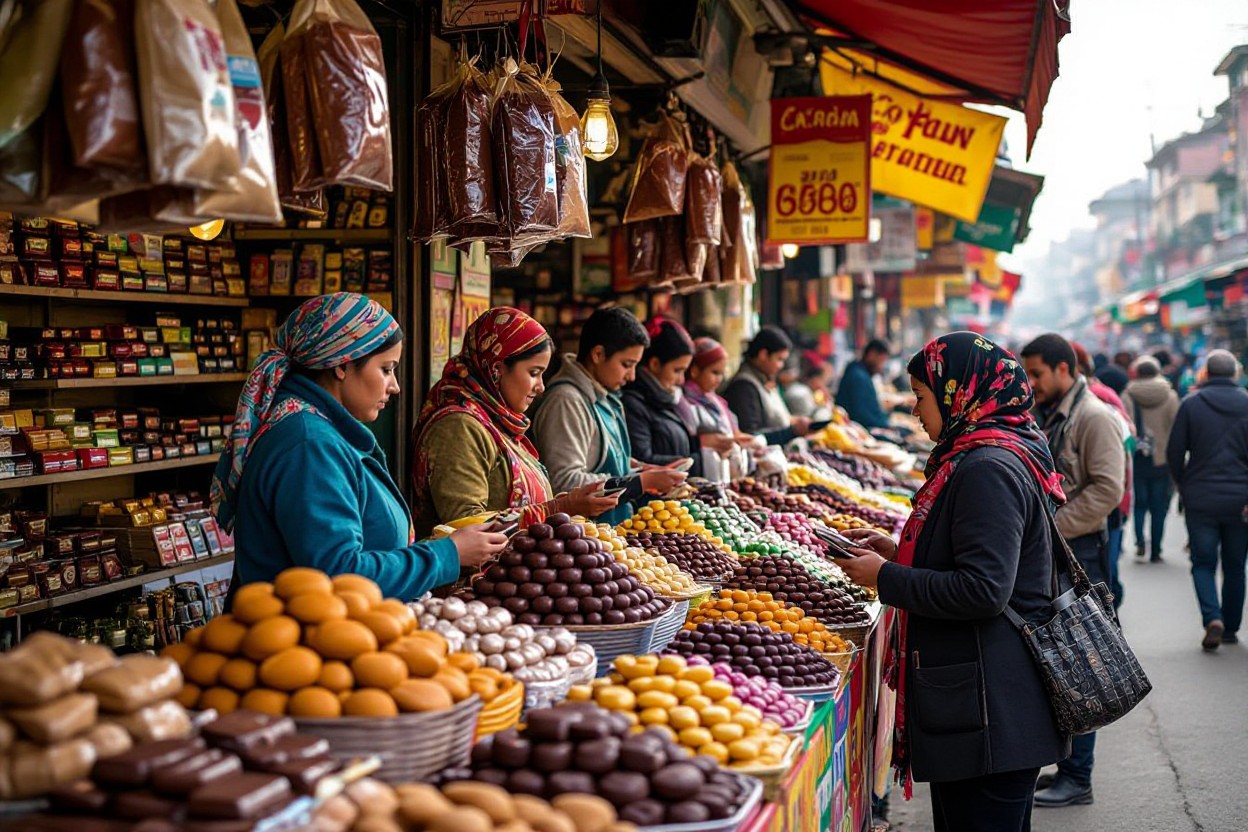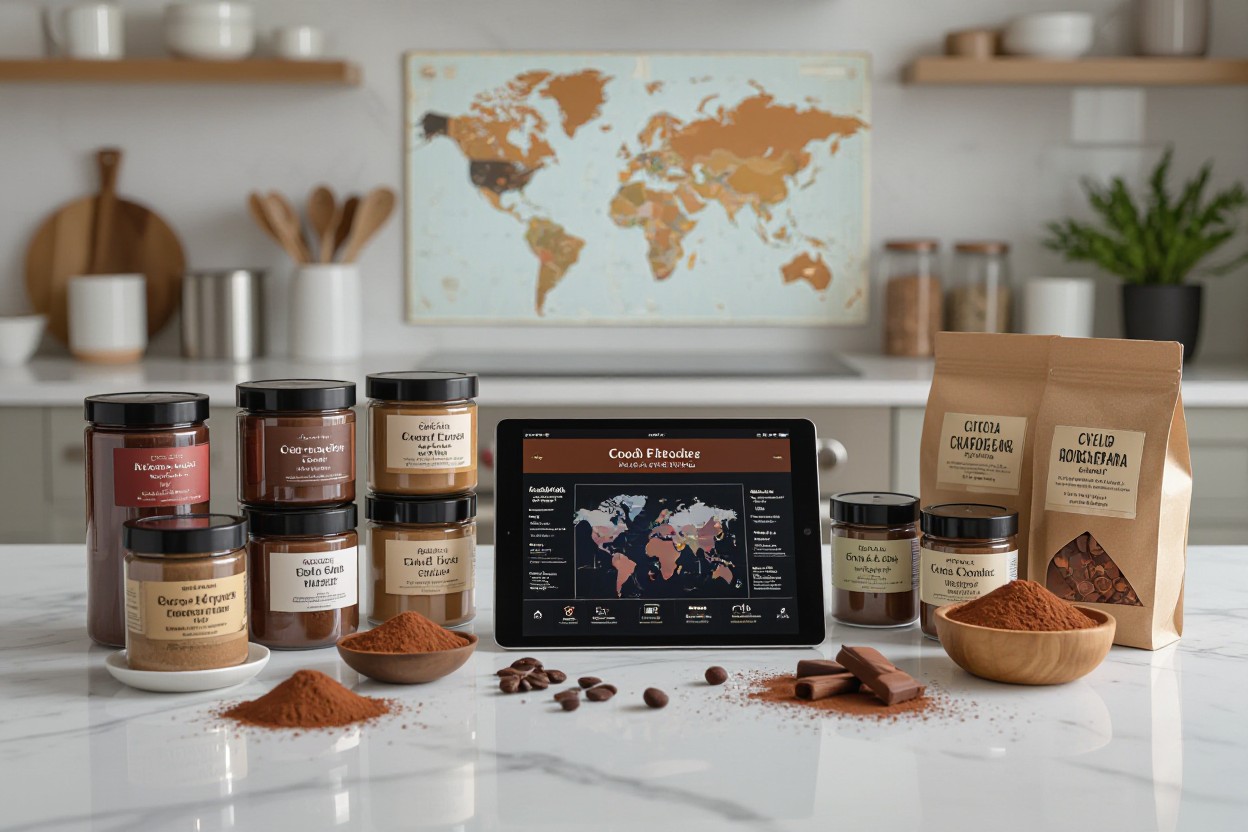Table of Contents
There’s a clear shift in cocoa powder consumption trends as regional tastes evolve and you adjust sourcing and product strategies. Understanding cocoa powder consumption trends helps you align offerings with emerging preferences; tracking cocoa powder consumption trends across Asia, Europe and the Americas guides pricing, supply and marketing. Comparative analysis of cocoa powder consumption trends and cocoa powder consumption trends data reveals premiumization and convenience-led demand your business can leverage.
Overview of Global Cocoa Powder Market
You’ll notice that cocoa powder consumption trends are shaped by divergent regional tastes: Europe and North America drive stable demand for premium baking and beverage powders, while Asia-Pacific posts the fastest volume growth as urbanization and café culture expand. Trade flows remain concentrated from West Africa to processing hubs in Europe, and you should track how quality differentiation and sustainability certifications are shifting where higher-margin powders are produced and sold.
Market Size and Growth Projections
Industry reports estimate the global cocoa powder market near $2.5–3.0 billion in 2023, with a projected CAGR of about 4–6% to 2030 driven by at-home baking, craft chocolate, and functional ingredient use. You’ll see demand spikes during holiday seasons and occasional commodity-driven price shocks; analysts link premiumization and clean-label trends to higher ASPs, while you should note emerging plant-based chocolate formulations as an incremental growth vector.
Major Players and Competitive Landscape
Major suppliers such as Barry Callebaut, Cargill, Olam, ADM and Hershey dominate processing and distribution, and cocoa powder consumption trends are influenced by their scale, backward integration and branded product launches. You can observe these firms leveraging sustainability programs—Barry Callebaut’s Cocoa Horizons and Cargill’s Cocoa Promise—to secure supply and meet retail and foodservice demand for certified powders.
Competition is also shaped by private-label growth and regional grinders: processing concentration gives large players margin advantage, while you should watch West African supply dynamics—Ivory Coast and Ghana produce roughly 60% of cocoa beans—and price volatility that can compress margins or trigger reformulation toward blends and alternative ingredients to stabilize costs.
Regional Cocoa Powder Consumption Patterns
You should note regional differences driving cocoa powder consumption trends; Western Europe and North America favor premium and functional formats while Asia-Pacific and Latin America grow via convenience and artisanal channels. For deeper segmentation and innovation signals see Cocoa Trends, global market overview. Consumers are shifting toward premium and plant-based chocolate.
North America
You observe cocoa powder consumption trends in North America led by specialty mixes, ready-to-drink applications and baking; premium cocoa commands 3–5% annual growth while grocery e-commerce sales for cocoa products jumped about 20% last year, pushing manufacturers to reformulate for clean labels and protein-fortified blends aimed at your on-the-go lifestyle.
Europe
You see Europe maintaining some of the highest per-capita cocoa powder consumption, with Northern and Western markets favoring dark and single-origin powders; industrial confectionery still dominates, but premium retail segments grew roughly 8% as consumers sought traceability and bean-to-bar stories.
You can point to Germany and the Netherlands as case studies where cocoa powder consumption trends shifted toward provenance and reduced-sugar formulations; manufacturers increased supply-chain transparency, and your interest in organic and Fairtrade labels directly boosted small-batch single-origin powder launches across specialty retailers.
Asia-Pacific
You find Asia-Pacific cocoa powder consumption trends characterized by rapid urbanization and rising middle-class demand; markets like China and India report double-digit growth in cocoa-based beverages and bakery uses, prompting multinational brands to introduce localized flavors such as matcha-cocoa and cardamom blends for your regional palate.
You notice supply-chain investments in Vietnam and Indonesia to meet regional demand, and your retail choices are driving growth in powdered mixes tailored for cafés and home brewing; this has translated into increased import volumes and a faster rollout of premium cocoa powder SKUs across modern trade channels.
Latin America
You track Latin America where cocoa powder consumption trends are shifting from raw-material export focus to domestic value-add: artisanal chocolate and single-origin powders are gaining traction, and small manufacturers in Brazil and Peru reported near-10% growth in specialty cocoa powder sales as your interest in local provenance rises.
You can look at Peru’s farm-to-brand initiatives as an example: producers are investing in post-harvest processing to capture more margin, and your demand for traceable, fruity-origin powders supports higher prices and niche exports, reshaping local markets and encouraging replication across the region.

Influencing Factors on Consumption Trends
You can trace regional shifts in cocoa powder consumption trends to supply shocks, flavor innovation, and demographic change—single-origin and reduced-sugar launches pushed per-capita use up in urban markets.
- Health-driven reformulations and functional blends
- Price volatility and income shifts
- Retail format changes and private-label growth
- Trade policy, sustainability, and provenance demands
Knowing the latest analysis in the Cocoa Powder Market Outlook & Insights 2025–2033 helps you benchmark cocoa powder consumption trends against forecasted demand.
Health Trends and Consumer Preferences
You see growing demand for low-sugar, high-fiber cocoa powder formulations; surveys show 38% of European shoppers sought reduced-sugar options in 2023, and functional blends with added protein or probiotics are shifting purchase patterns—this reshapes cocoa powder consumption trends toward premium and health-focused SKUs.
Economic Conditions and Purchasing Power
When inflation spikes, you often trade down from specialty to bulk cocoa powder: price-sensitive markets in West Africa and Southeast Asia showed 12–18% volume swings during 2022–2023, and aggressive private-label entry quickly alters cocoa powder consumption trends.
You should watch currency depreciations and tariff changes closely: a 10% local currency fall in 2022 translated into near-equivalent import cost hikes, prompting retailers to promote lower-priced cocoa powder and pushing value segments to capture share, directly affecting cocoa powder consumption trends across income cohorts.

Market Shifts and Innovations
You see premiumization and e-commerce accelerating cocoa powder consumption trends, with specialty and health-focused SKUs posting double-digit growth in several markets. For forecast depth consult Cocoa Market Size & Trends 2025-2035. You should retool packaging and supply chains as Latin America shifts to value-added powders and Asia increases ready-mix demand, altering logistics and margin profiles in cocoa powder consumption trends.
Product Innovations and New Offerings
You encounter alkalized, high‑flavanol and single‑origin cocoa powders, plus microencapsulated instant blends and sugar‑reduced options targeting health-conscious consumers. Retailers test single-serve sachets and plant‑based cocoa mixes to raise trial rates, and R&D pipelines focus on solubility and mouthfeel. These shifts are reshaping cocoa powder consumption trends by pushing premium and convenience formats into mainstream distribution.
Sustainability and Ethical Sourcing Practices
You can track concrete programs such as Mondelēz’s Cocoa Life and Barry Callebaut’s Cacao Horizons, Rainforest Alliance and Fairtrade certifications, and blockchain traceability pilots that link farms to batches. Buyers demand proof of living-income programs and deforestation-free supply chains, and those requirements now factor into procurement decisions as a core driver of cocoa powder consumption trends.
You should assess metrics like farmer training reach, yield improvements, and premium flows; for example, certification schemes often include farmer training, child‑labor monitoring and agroforestry pilots, and companies report reduced yield volatility and better traceability. Procurement teams are increasingly tying purchase volumes to verified sustainability KPIs, which directly influence long‑term cocoa powder consumption trends across regions.

Future Outlook on Cocoa Powder Consumption
You should expect cocoa powder consumption trends to be shaped by premiumization, sustainability premiums, and plant-based innovation, with the global market likely tracking a modest CAGR of roughly 4–5% into the next decade; you’ll see specialty single-origin powders from Ghana and Ecuador gain shelf space while mainstream brands push reduced-sugar and fortified blends. Investors such as Barry Callebaut and major CPGs are already funding traceability and product innovation, signaling that cocoa powder consumption trends will skew toward quality, transparency, and functional claims.
Emerging Markets and Potential Growth Areas
Asia-Pacific and parts of Africa will drive the next wave of cocoa powder consumption trends, as rising middle-class disposable income in China, India, and Indonesia increases per-capita chocolate and beverage demand; you’ll notice urban cafés and retail chains introducing premium hot chocolate and baking kits. Meanwhile, Latin America’s craft chocolate movement and West Africa’s expansion into value-added processing create region-specific opportunities for manufacturers targeting higher-margin cocoa powder segments.
Trends to Watch in the Next Decade
Watch plant-based and functional formulations, sugar-reduced recipes, and direct-trade single-origin offerings to dominate cocoa powder consumption trends, with e-commerce and DTC channels accelerating niche launches; you’ll also see more fortified powders with protein, fiber, or adaptogens aimed at wellness-focused consumers. Regulatory moves on sugar labeling and carbon footprint reporting will further push brands to reformulate and market sustainability credentials alongside taste.
For example, expect formulation shifts where manufacturers replace part of the sugar content with stevia or chicory fiber while increasing cocoa solids to retain chocolate intensity, a tactic already piloted by several European bakeries; you’ll also observe growth in B2B demand as craft chocolatiers and specialty bakeries source single-origin cocoa powders directly from cooperatives, reinforcing the cocoa powder consumption trends toward transparency and premium differentiation.
Summing up
So you must monitor cocoa powder consumption trends as regional tastes reshape demand; cocoa powder consumption trends show growth in emerging markets and premium/health segments in mature markets. These cocoa powder consumption trends require supply-chain agility and targeted marketing, and by tracking cocoa powder consumption trends and predicting cocoa powder consumption trends you can adapt your product mix and sourcing to stay competitive and align your business with shifting consumer preferences.